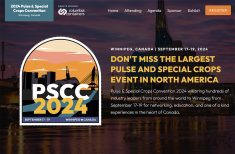 The complexion of Canadian politics changed dramatically last night. Michael Ignatieff looked pale as paste during his concession speech, Gilles Duceppe’s face was as grey as his suit and Jack Layton had an orange hue to his skin that almost matched his tie.
The complexion of Canadian politics changed dramatically last night. Michael Ignatieff looked pale as paste during his concession speech, Gilles Duceppe’s face was as grey as his suit and Jack Layton had an orange hue to his skin that almost matched his tie.
Stephen Harper looked healthier and certainly happier than he has in years, flushed with the success of a majority government and with his unusual eyes picking up the colours of Conservative blue signs.
Read Also

Farmer ownership cannot be seen as a guarantee for success
It’s a powerful movement when people band together to form co-ops and credit unions, but member ownership is no guarantee of success.
Media are occasionally chastised for discussing the appearance of candidates. Policies and intellect are the things that matter, say the finger-waggers. But what about candidates’ body language? Surely that says something about their attitudes toward people, their sincerity, their confidence and their inhibitions?
Faith Wood, a behavioural strategist, thinks so. She provided a series of articles through Troy Media in which she analyzed the body language of federal party leaders during the campaign. Read more about it by clicking here.

Wood said Ignatieff’s body language often came across as “aloof and contemptuous.” Aggressive hand movements, lack of eye contact, frowns and rapid blinking were observed during the April 12 leadership debate, which Wood said proved the point. However, the Liberal leader exuded confidence early in his campaign, with open hand gestures and an assertive stance.
Woods’ observations seem to track the up and downs of the Liberal campaign.
Layton used upwardly mobile gestures like keeping his chin up, raising his shoulders and giving frequent thumbs-up, said Wood. His overall body language indicated he was happy to be on the campaign trail.
And as it turned out, what was not to like? Layton’s party had its best showing ever. His body language apparently foretold the tale.
As for Stephen Harper, Wood noticed frequent use of the “parental finger wag,” dismissive head shaking and an often unapproachable stance. On the up side, she notes he often appeared relaxed and confident, with open hand gestures and upward facing palms, signifying honesty and sincerity.

It just depends on the context, Wood notes. Body language at an adversarial debate will be far different from body language at a Conservative barbecue in Calgary Southwest.
After reading Wood’s opinions on body language, I was anxious to employ the concepts on candidates in my current riding of residence, Lethbridge. Might they help me make a voting decision?
Observation at political forums proved useful on three of the four candidates, but it was impossible to assess Jim Hillyer, the invisible man. Like many Conservative candidates, he chose not to attend forums and subject himself to analysis, be it of body language or of policy.
Hillyer won the seat last night. Perhaps one day more of his constituents will actually lay eyes on him.














